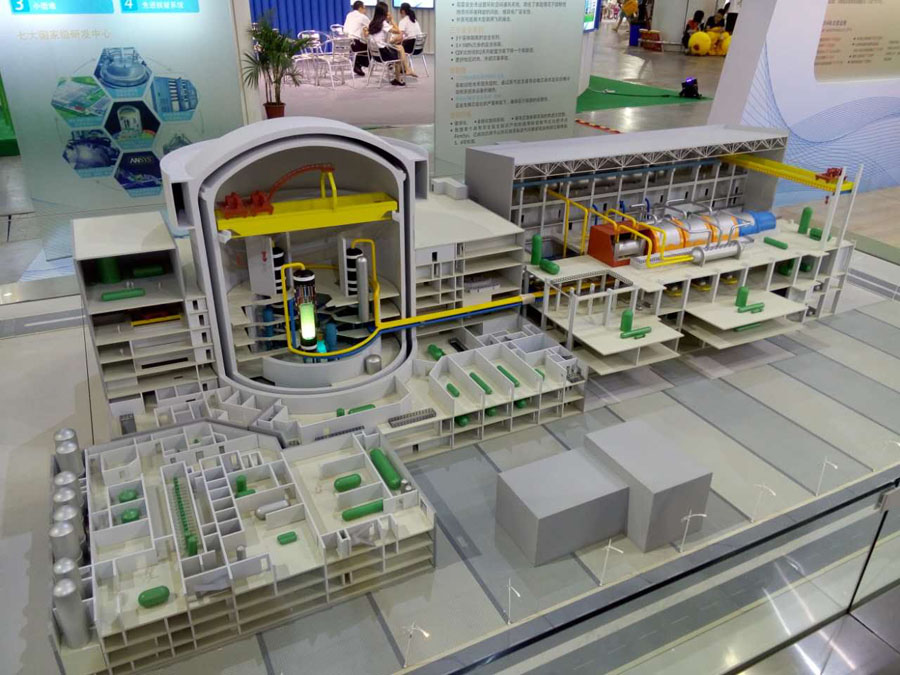I have blogged before about China's ambitious plans for expanding their use of nuclear power. The latest big Chinese five year plan covers from 2016 to 2020. The plan says that China is going to invest seventy eight billion dollars to build seven new reactors each year from 2016 to 2020. China will have eighty eight gigawatts of nuclear power by 2020 under the plan. Projected further into the future, China expects to have one hundred and ten nuclear reactors operating by 2030. Beyond that, China wants to spend up to a trillion dollars to generate two hundred and fifty gigawatts with nuclear reactors by 2050. Considering estimates of other countries projected use of nuclear power, the 2050 estimate would have China generating one fourth of the world's nuclear power.
Currently, China has twenty seven operating reactors and twenty four reactors under construction. The Chinese government has approved the construction of six new nuclear power reactors based on the Chinese Hualong-1 design. Westinghouse Electric is a U.S. based nuclear technology company owned by Toshiba, a Japanese company. Westinghouse is scheduled to begin operating its first AP1000 pressurized water reactor in China in 2016. Westinghouse hopes that China will order ten more AP1000 reactors to be constructed in the next ten years.
China has ambitions to be the number one exporter of nuclear power reactors. They hope to export as many as eight Chinese designed reactors by 2020.
China has just signed a deal to help finance a new French power reactor at Hinkley Point in England. Part of the deal is reported to be permission for China to build a Chinese designed reactor in England. It is widely believed that this reactor is being built to be a demonstration model for the Chinese reactor export business.
Argentina is in negotiation with China to build its fourth nuclear power reactor. This reactor would be built by the same company that is building the Chinese reactor in England as part of the Hinkley Point agreement. The reactor will be based on a Chinese design and built by Chinese technicians. The agreement will be worth about five billion dollars.
One advantage that China has over its competitors for the international nuclear power reactor market lies in the fact that China has more forges than any other country. They have invested massively in industrial infrastructure. Forges are needed to make the steel pressure vessels that contain the nuclear reactor cores.
Another major advantage that China has is that it can construct nuclear reactors much more cheaply than competing countries. Six reactors being built at Yangjiang in southern China are projected to cost about twelve billion dollars in total or about two billion dollars each. Other nuclear reactor projects being sold by other countries cost about six billion dollars each. In general, single Chinese reactors are projected to cost at least thirty percent less than reactors from other countries.
It will be interesting to watch China attempt to meet its very optimistic goals for nuclear power, domestic and exported. Big nuclear projects are having difficulty finding sufficient funding these days. Often, the country constructing the reactor will offer a substantial loan to the country buying the reactor. The success of the Chinese nuclear export program will depend on the health of the Chinese economy which has been showing signs of weakness lately.
China has very serious problems with corruption which has led to serious problems in some construction projects. If a poorly built Chinese nuclear reactor breaks down and releases radiation, the international market for Chinese reactors could cool off very rapidly
Model of a Hualong-1 Chinese reactor:
